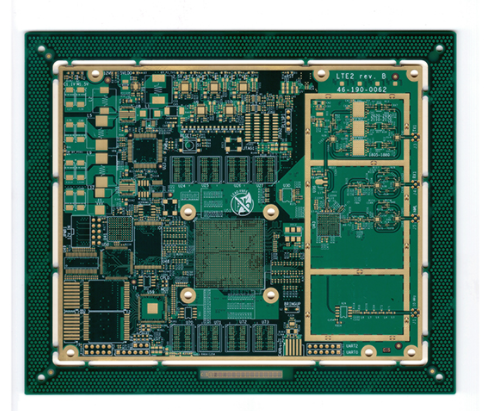PCB process What are the differences and effects of changing SMD parts to through-hole solder paste (Paste-In-Hole) process?
The boss lost a problem today: assuming the same board, the same part is changed from the original pure SMD part to the traditional plug-in part process or SMD solder foot + through hole positioning column and using "through hole solder paste (PIH, Paste- In-Hole)”, what difference and impact will this have on the production line and design?
At that time, three lines popped up immediately, but whether you like it or not, you have to start thinking about this question. Later I learned that it was a way to prevent the connector from being damaged by a rude customer.
PIH (Paste-in-Hole) is sometimes called PIP (Pin-In-Paste).

The first thing that comes to mind is that the traditional plug-in parts of the PIH process have to go through the SMT high-temperature reflow process, so the part design must meet the following specifications, otherwise the gains may not be worth the loss:
PIH parts should have tape & reel packaging (tape & reel), so that SMT machines can be used for placement/printing, at least a hard tray must be used.
The material of PIH parts must be able to withstand the high temperature of SMT reflow. Generally, PIH parts are required to be placed on the second side of the furnace. If it is only passed through the furnace once, the current lead-free process is best required to withstand at least 260°C for more than 10 seconds.
The welding feet of PIH parts cannot have kink and tight fit designs, otherwise the parts will be difficult to put on the board with the machine. If you reluctantly use manual operations to put such parts, it may be due to the need Parts can only be inserted into the circuit board with over-voltage, causing the circuit board to vibrate, and finally causing the parts that have been built on the circuit board to shift or fall.
PIH parts must be designed with a flat surface on the top of the part so that the SMT nozzle can suck, and a piece of high temperature tape that prevents air leakage can also be pasted on it.
At the junction of the solder feet of the PIH parts and the circuit board, a gap/standoff of more than 0.2mm should be reserved to prevent the siphon phenomenon from occurring, causing overflow of tin, and the problem of uncertain tin beads affecting product functions.
The height of the solder feet of PIH parts is recommended to exceed the thickness of the circuit board by 0.3~1.0mm. Too long is not good for picking and placing parts. Too short is likely to cause insufficient tin and easy to fall off, because most of the parts that will use the PIH process are external connections Device.
As for the impact of changing pure SMD parts into PIH or SMD+PIH parts on the manufacturing process and products, I will try to summarize a few key points below:
Man-hours: There should not be much difference in the production time of these two parts.
Cost: The cost of PIH parts may be higher than that of pure SMD, because there are more perforated PIN feet.
The gap between SMT parts: According to experience, the gap between PIH parts is preferably 1.5mm or more, while pure SMD parts only need to be 1.0mm, and some can even be reduced to 0.5mm. This is because the solder feet of PIH are relatively easy to deform, so the through holes will be designed to be larger. Generally, it is recommended that the ratio of the solder foot diameter/the through hole diameter is 0.5 to 0.8, and the deviation of the parts will be relatively large, so it is necessary A relatively large gap.
Rework and repair: Generally speaking, PIH parts are more difficult to rework and repair than pure SMD parts, because the solder in the through holes needs to be removed when replacing the parts. This is a more difficult process with current technology, of course. You can consider destroying the entire part, but the difficulty of reworking HIP parts is relatively high.
Circuit board space utilization rate: Because the back of PIH parts has PIN pins protruding, the use space on the circuit board is relatively less.
The problem of tin-eating and filling: IPC-610 stipulates that the through-hole tin-eating rate of the solder feet of through-hole parts must exceed 75%, but sometimes it is difficult to use regular solder paste printing to achieve this amount of tin due to inherent limitations. At that time, the amount of solder must be increased.
Actually speaking, if the SMD parts are changed to the plug-in PIH process, the solder strength will be stronger than that of pure SMD, which can withstand greater or more external force insertion and removal. According to past experience, the endurance can be about 1.5 times, of course. It depends on the number of PINs and the thickness of the PIN feet.
ipcb is a high-precision, high-quality PCB manufacturer, such as: isola 370hr PCB, high-frequency PCB, high-speed PCB, ic substrate, ic test board, impedance PCB, HDI PCB, Rigid-Flex PCB, buried blind PCB, advanced PCB, microwave PCB, telfon PCB and other ipcb are good at PCB manufacturing.